
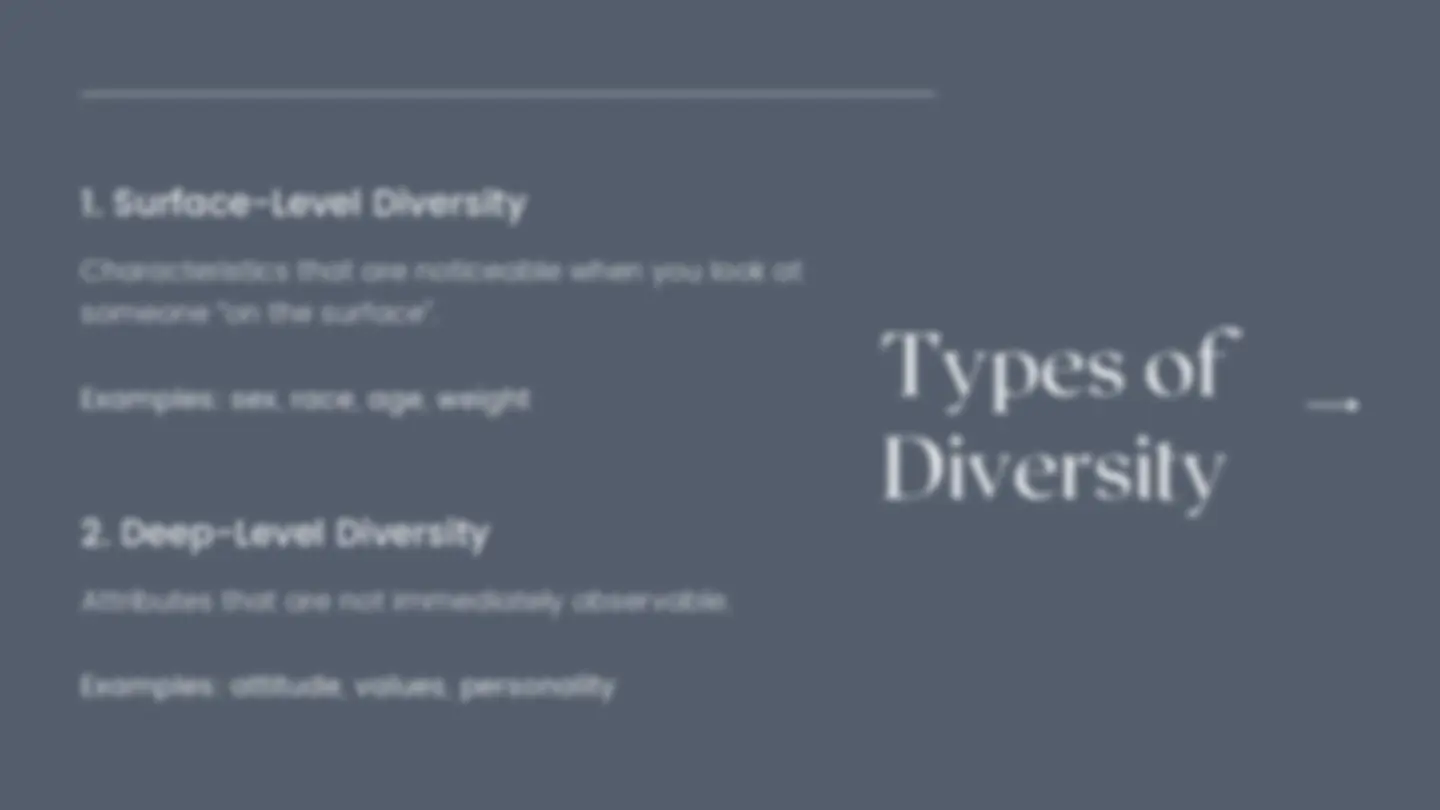
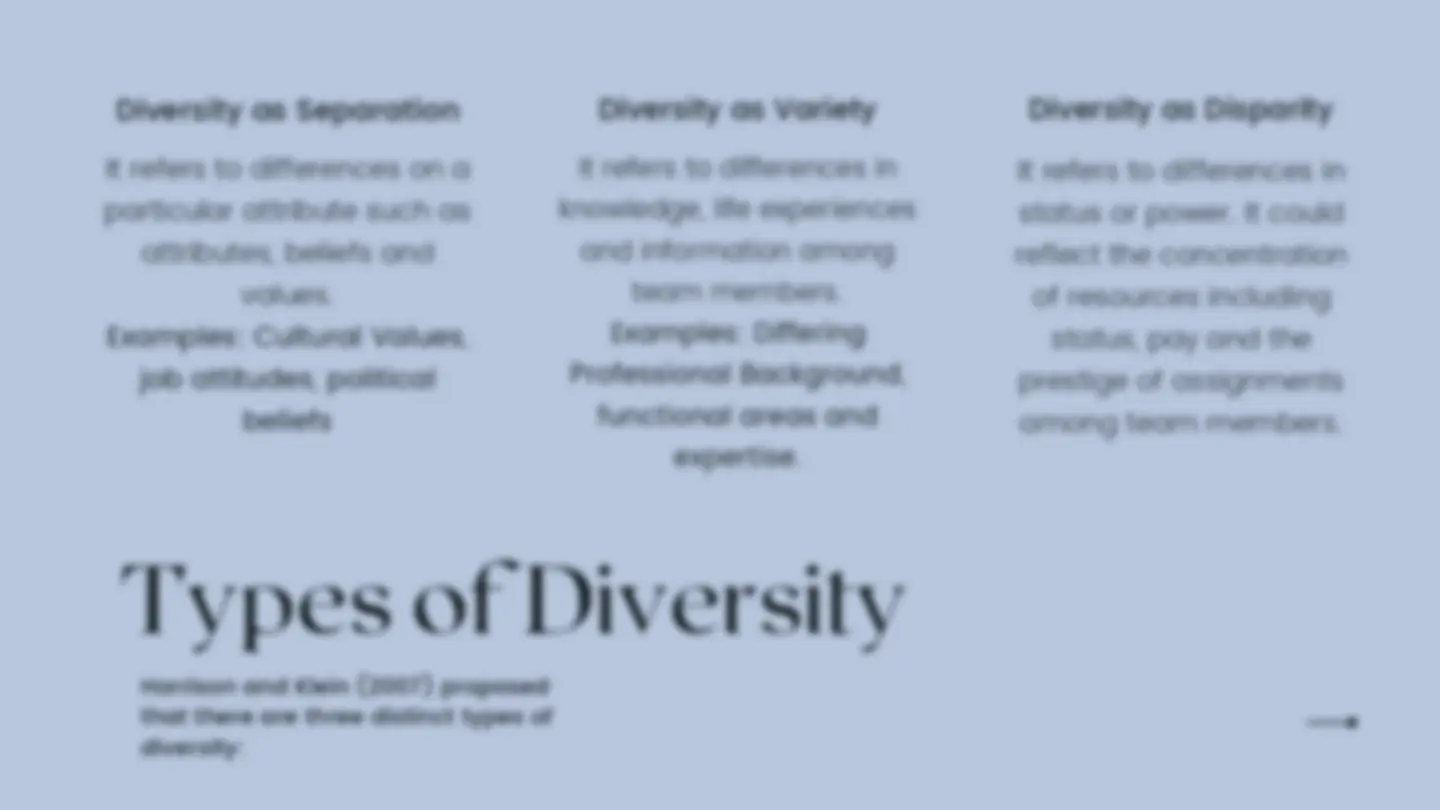
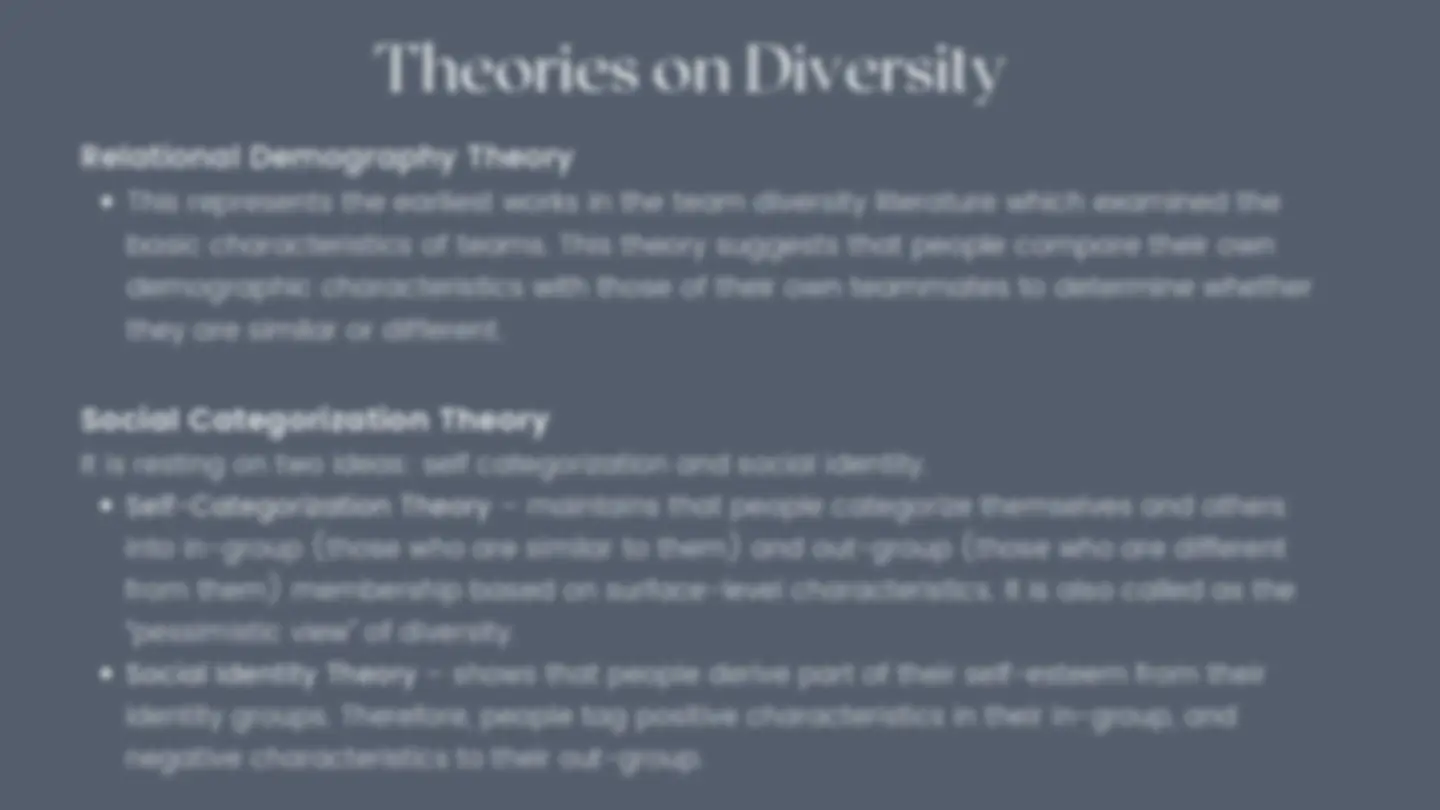

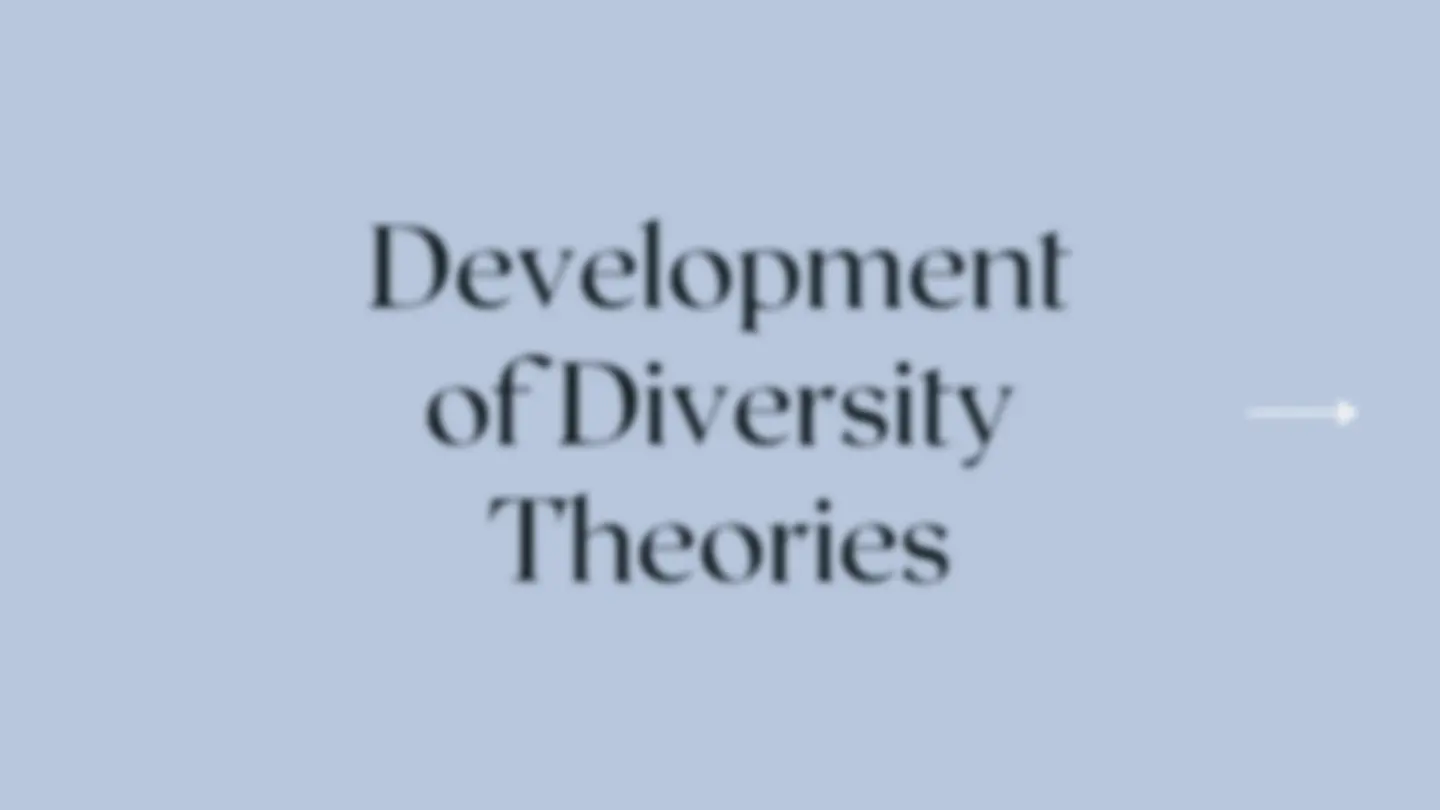
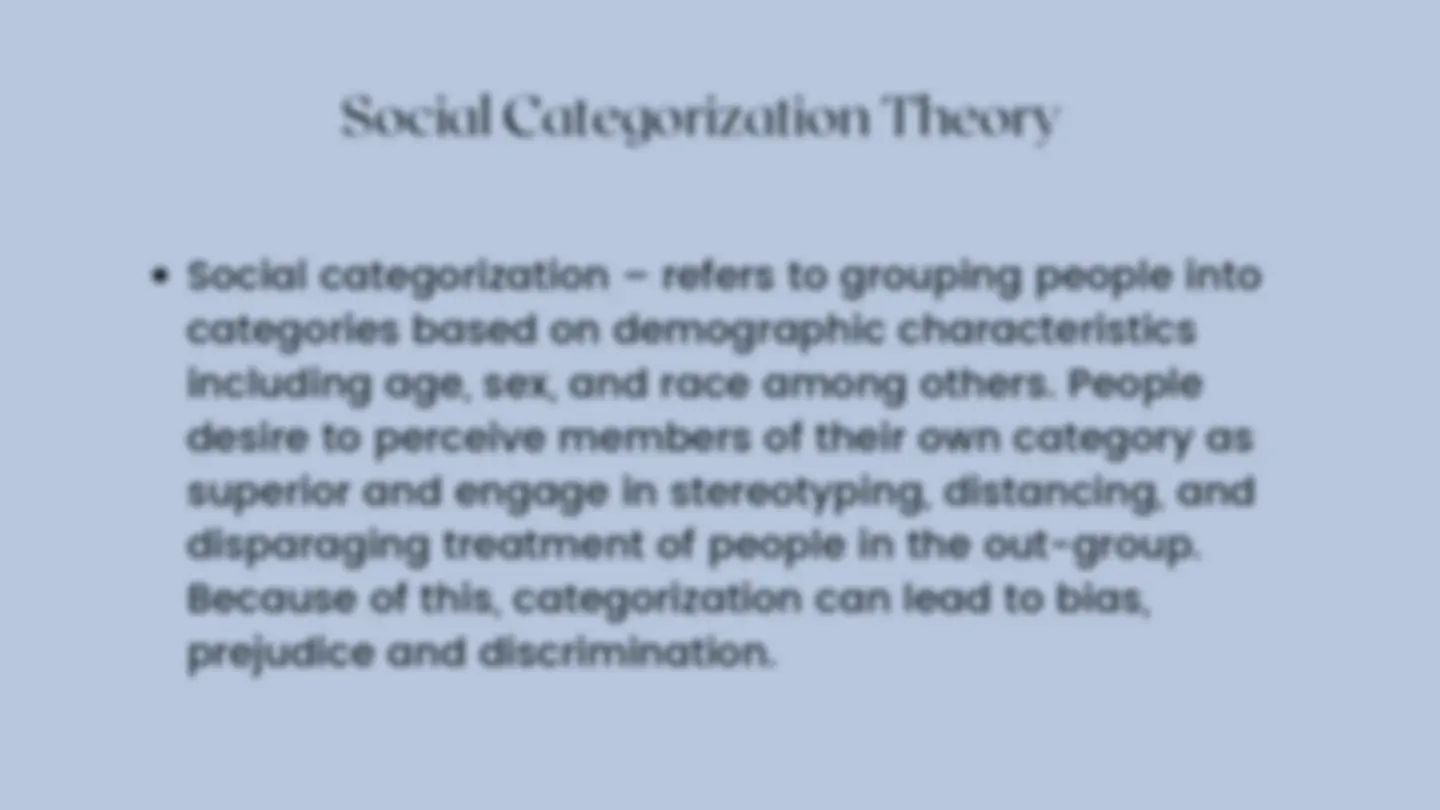
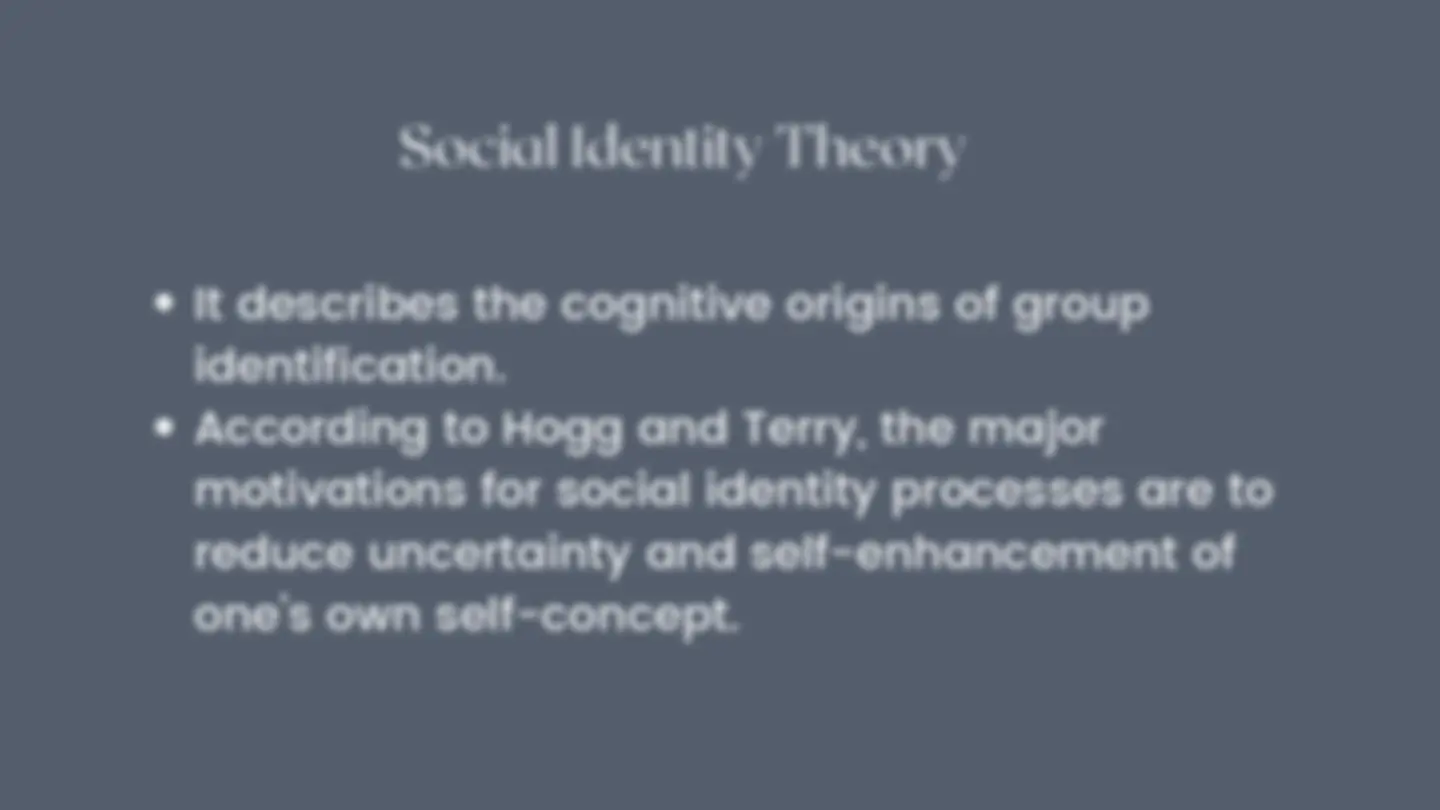
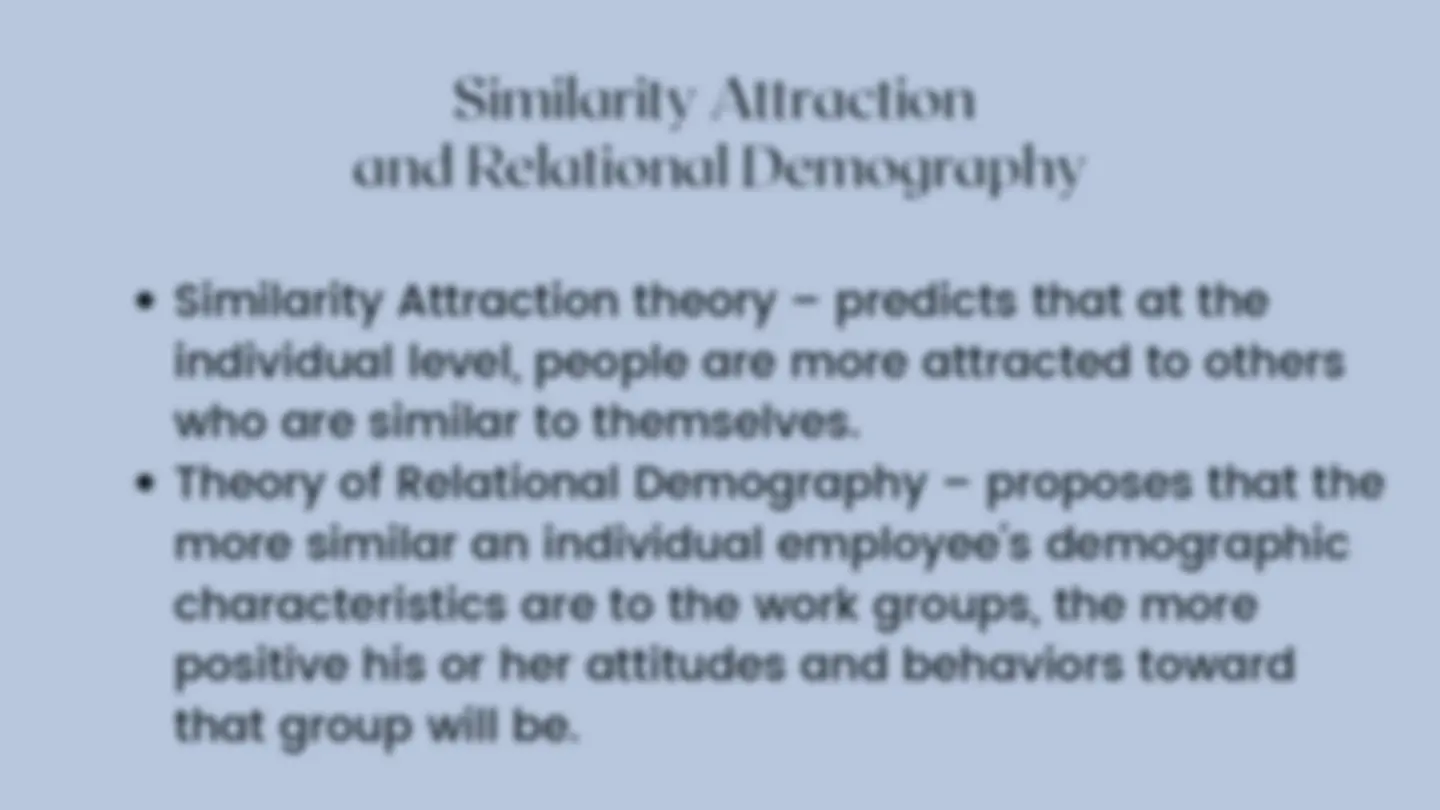
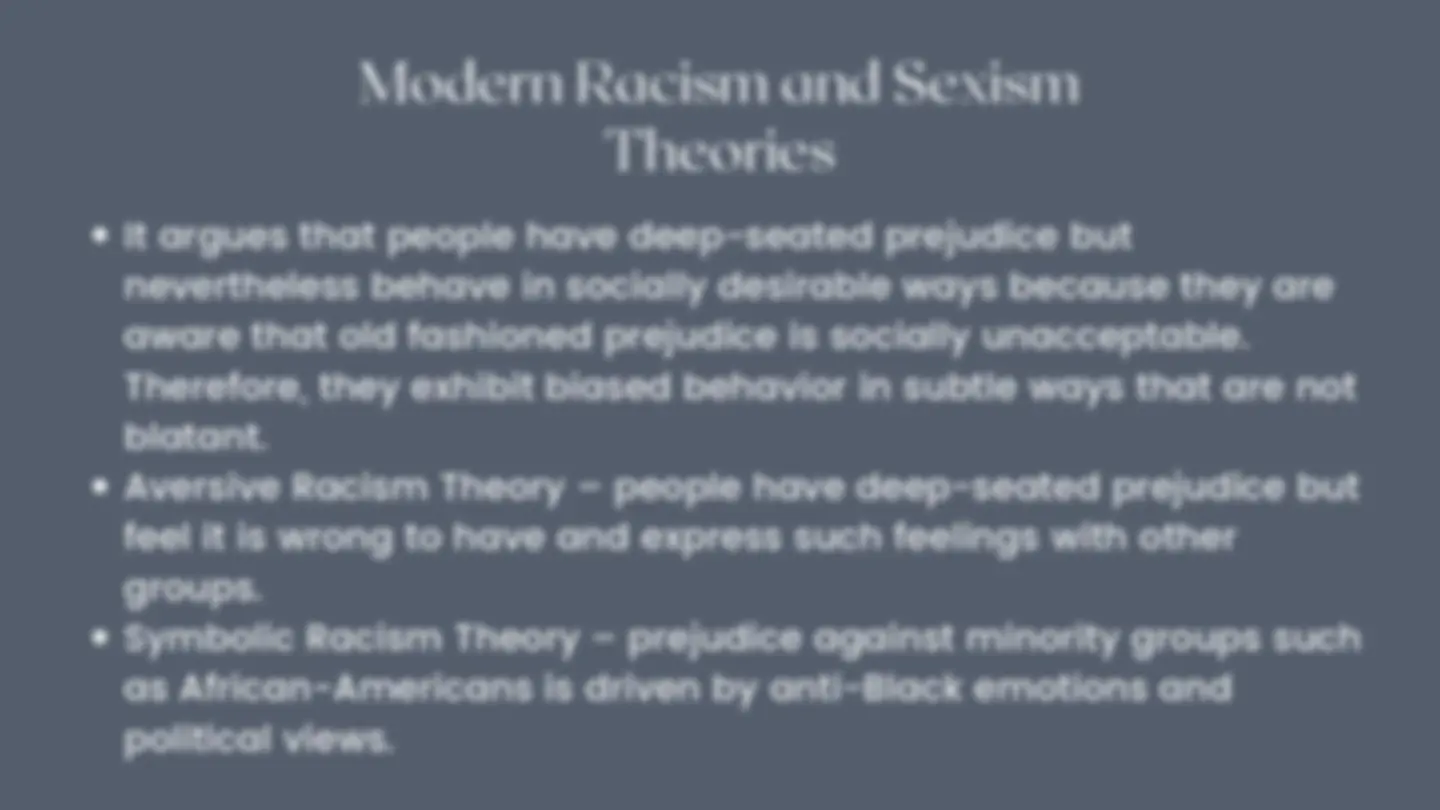
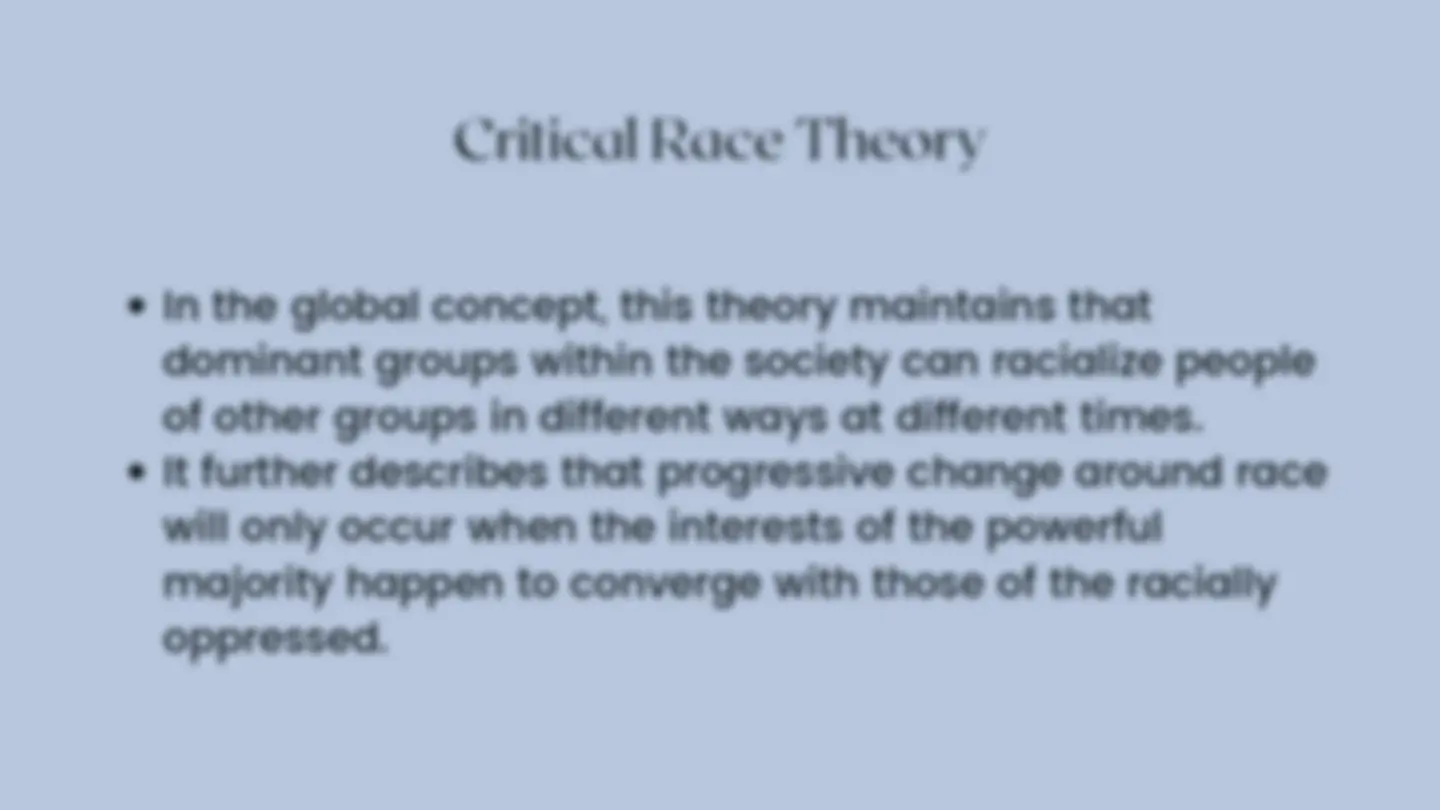
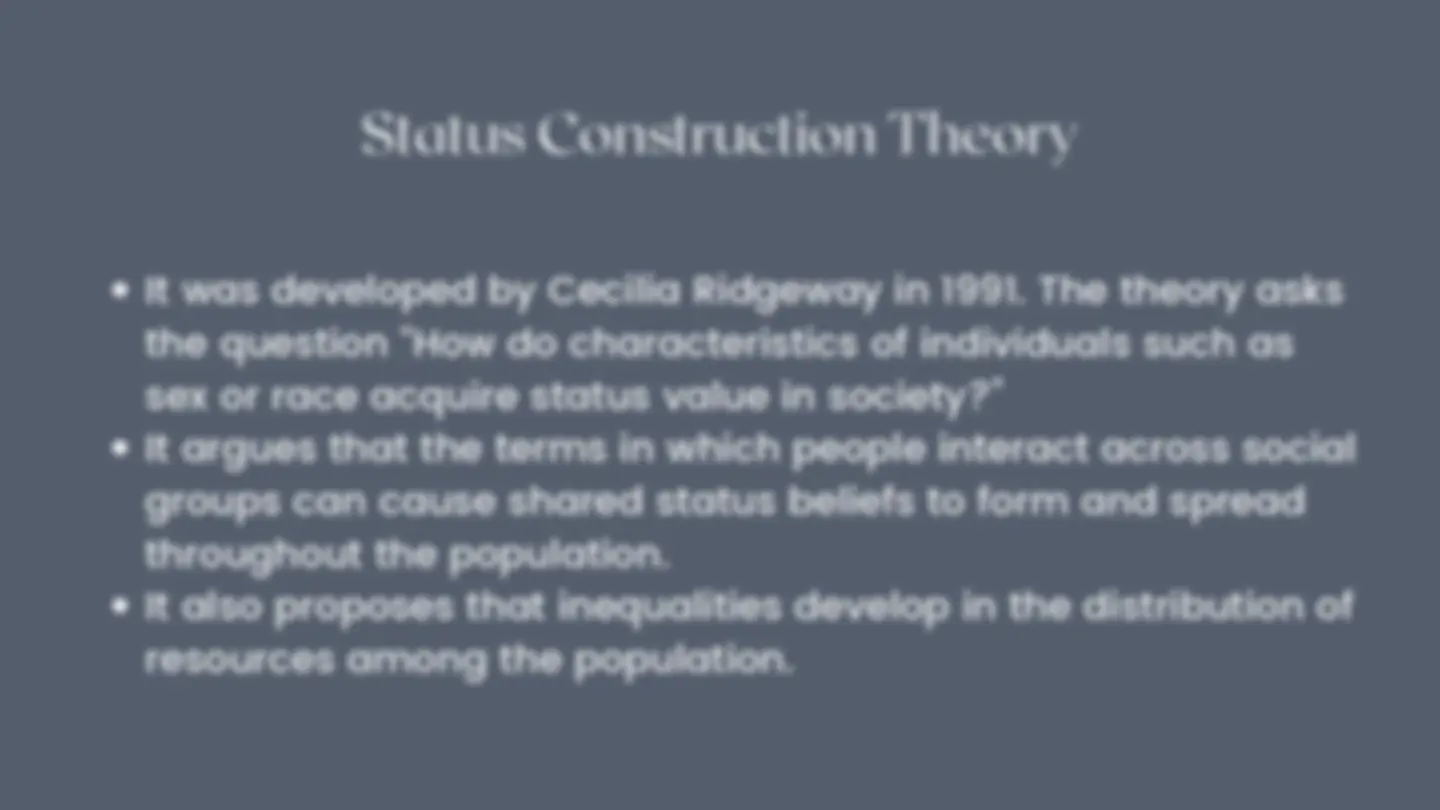
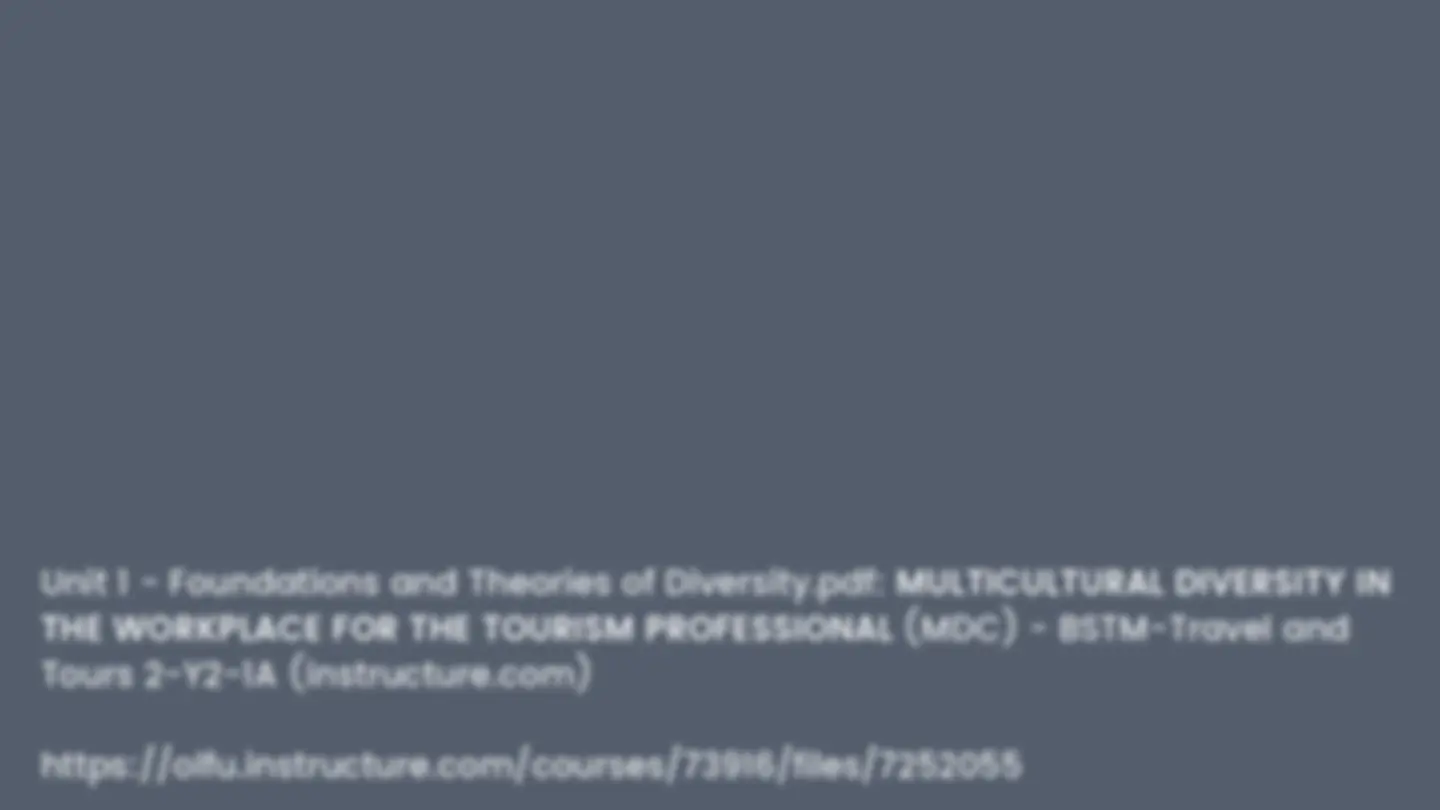
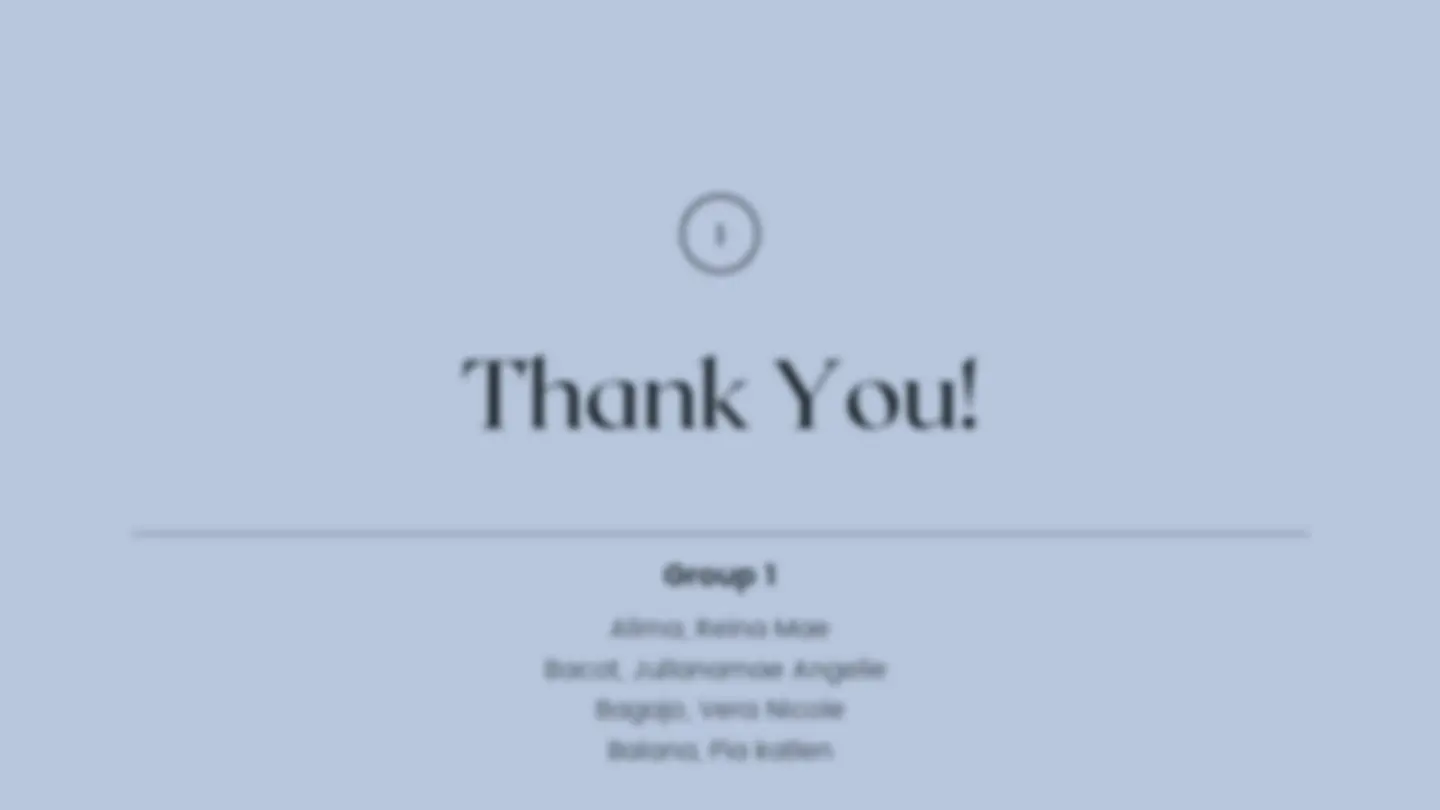


Study with the several resources on Docsity

Earn points by helping other students or get them with a premium plan


Prepare for your exams
Study with the several resources on Docsity

Earn points to download
Earn points by helping other students or get them with a premium plan
Community
Ask the community for help and clear up your study doubts
Discover the best universities in your country according to Docsity users
Free resources
Download our free guides on studying techniques, anxiety management strategies, and thesis advice from Docsity tutors
Unit 1 - Foundations and Theories of Diversity.pdf: MULTICULTURAL DIVERSITY INTHE WORKPLACE FOR THE TOURISM PROFESSIONAL (MDC) -
Typology: Cheat Sheet
1 / 21

This page cannot be seen from the preview
Don't miss anything!














MULTI-CULTURAL DIVERSITY IN WORKPLACE FOR THE TOURISM PROFESSIONAL 1
DIVERSITY IS DEFINED AS:
Types of Diversity Diversity as Separation It refers to differences on a particular attribute such as attributes, beliefs and values. Examples: Cultural Values, job attitudes, political beliefs Diversity as Variety It refers to differences in knowledge, life experiences and information among team members. Examples: Differing Professional Background, functional areas and expertise. Diversity as Disparity It refers to differences in status or power. It could reflect the concentration of resources including status, pay and the prestige of assignments among team members. Harrison and Klein (2007) proposed that there are three distinct types of diversity:
Theories on Diversity This represents the earliest works in the team diversity literature which examined the basic characteristics of teams. This theory suggests that people compare their own demographic characteristics with those of their own teammates to determine whether they are similar or different. Self-Categorization Theory – maintains that people categorize themselves and others into in-group (those who are similar to them) and out-group (those who are different from them) membership based on surface-level characteristics. It is also called as the “pessimistic view” of diversity. Social Identity Theory – shows that people derive part of their self-esteem from their identity groups. Therefore, people tag positive characteristics in their in-group, and negative characteristics to their out-group. Relational Demography Theory Social Categorization Theory It is resting on two ideas: self categorization and social identity.
Problem-solving Argument – diverse teams should produce better decisions via a wider range of perspectives considered and a more thorough analysis of issues. Cost argument – as organizations become more diverse, those are able to integrate diversity more smoothly will realize cost advantages. Resource-acquisition argument – proposes that companies with a good reputation for being inclusive and integrating diversity well will win with the competition for best talent. Marketing Argument – diverse companies with a wealth of cultural information among employees will be able to better market their products in foreign markets as well to domestic subgroups of the population.
System flexibility argument – companies adopting a multicultural approach to managing diversity will be less rigid and more fluid, which will allow them to better respond to environmental changes. Information-processing perspective – argues that any time there is a task uncertainty, there is a greater amount of information which must be processes to accomplish a task and obtain good performance.
Social categorization – refers to grouping people into categories based on demographic characteristics including age, sex, and race among others. People desire to perceive members of their own category as superior and engage in stereotyping, distancing, and disparaging treatment of people in the out-group. Because of this, categorization can lead to bias, prejudice and discrimination. Social Categorization Theory
Henri Tajfel – a Jew who survived the Nazi Holocaust. Due to his tragic moments of his family not spared by the Holocaust, he spent his time studying Psychology. He became a Social Psychology professor and dedicated all his efforts to studying why various groups grow to dislike and even hate each other. He, along with his student, John Turner, developed the theory of social categorization. Social Categorization Theory
It describes the cognitive origins of group identification. According to Hogg and Terry, the major motivations for social identity processes are to reduce uncertainty and self-enhancement of one’s own self-concept. Social Identity Theory
Similarity Attraction theory – predicts that at the individual level, people are more attracted to others who are similar to themselves. Theory of Relational Demography – proposes that the more similar an individual employee’s demographic characteristics are to the work groups, the more positive his or her attitudes and behaviors toward that group will be. Similarity Attraction and Relational Demography
Social Dominance – the degree to which individuals desire and support a group-based hierarchy and the domination of inferior groups by superior groups. Developed by Sidanius and Pratto (1999) to understand how social hierarchies are formed. The theory suggests that societies generate and sustain a trimorphic system and that these systems are typically observed universally across the world. Social Dominance Theory
AGE SYSTEM explains status that older people have more social power as compared to children. GENDER SYSTEM represents status such that men typically have an unequal amount of political and collective power compared to women. ARBITRARY SYSTEM of social values based on things like race, class and religion is typically present and represents levels of social status Social Dominance Theory
It was developed by Cecilia Ridgeway in 1991. The theory asks the question “How do characteristics of individuals such as sex or race acquire status value in society?” It argues that the terms in which people interact across social groups can cause shared status beliefs to form and spread throughout the population. It also proposes that inequalities develop in the distribution of resources among the population. Status Construction Theory
Unit 1 - Foundations and Theories of Diversity.pdf: MULTICULTURAL DIVERSITY IN THE WORKPLACE FOR THE TOURISM PROFESSIONAL (MDC) - BSTM-Travel and Tours 2-Y2-1A (instructure.com) https://olfu.instructure.com/courses/73916/files/